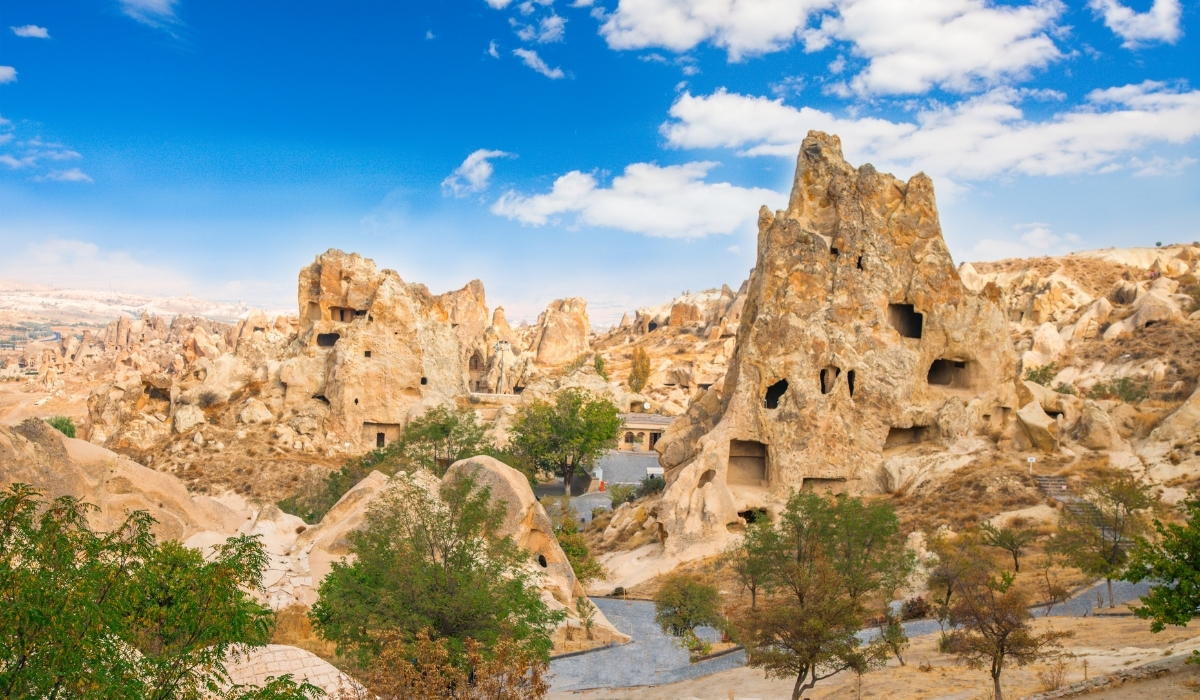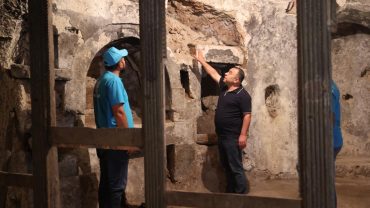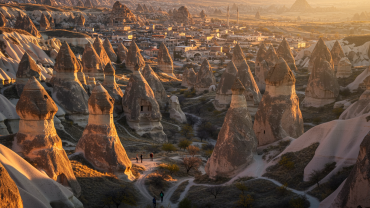UNESCO Sites in Turkey offer a window into the country’s vast cultural, historical, and natural richness. From the ancient city of Troy to the surreal landscapes of Cappadocia, these heritage sites are more than just popular landmarks—they are living testaments to civilizations, faiths, and artistry that shaped the course of human history. Whether you’re wandering through Istanbul’s historic peninsula or exploring the forgotten ruins of Ani, each destination tells a story that resonates far beyond the borders of modern-day Turkey.
1. Göreme National Park and the Rock Sites of Cappadocia
Perhaps one of the most visually stunning UNESCO Sites in Turkey, Göreme National Park is famous for its surreal rock formations, fairy chimneys, and ancient cave churches. Carved by both nature and human hands, the landscapes of Cappadocia transport visitors into a world of volcanic stone cities, Byzantine monasteries, and hidden underground dwellings. The park exemplifies the harmony between natural beauty and human spirituality.

Explore Cappadocia Tours to experience more of the region’s enchanting valleys and fairy chimneys.
2. Historic Areas of Istanbul
From Hagia Sophia to the Blue Mosque, the historic peninsula of Istanbul embodies the crossroads of civilizations. As the former capital of the Roman, Byzantine, and Ottoman empires, this UNESCO-listed area showcases architectural masterpieces and sacred sites that span over two millennia.
Curious about what else to explore in the city? Don’t miss our guide to the Top 10 must-see attractions in Istanbul for a deeper cultural experience.
3. Hierapolis–Pamukkale
This site uniquely combines natural wonder and archaeological brilliance. The white travertine terraces of Pamukkale contrast with the ruins of Hierapolis, a Greco-Roman spa city. Together, they form one of the most iconic UNESCO Sites in Turkey.
For a truly unforgettable perspective, consider booking a hot air balloon flight over Pamukkale and admire the terraces from the sky.
4. Hattusha: The Hittite Capital
Located in modern-day Boğazkale, Hattusha once served as the capital of the Hittite Empire. It is renowned for its massive stone fortifications, monumental gates, and advanced urban planning.
Discover the full story of this ancient empire in our dedicated post: Read our blog on Hattusha.
5. Mount Nemrut
Atop this remote mountain in Southeastern Turkey, colossal stone heads stare out across the sunrise. Built by King Antiochus I in the 1st century BCE, Mount Nemrut is one of the most surreal UNESCO Sites in Turkey.
Looking to uncover more remote treasures? Discover Eastern Turkey’s mystical sites through our expert travel insights.
6. Ephesus
Ephesus is one of the best-preserved ancient cities in the world. From the Library of Celsus to the Grand Theater, it offers a glimpse into Roman urban life.
Step into ancient Roman life and explore our curated Ephesus tours that bring history to life.
7. Ani Archaeological Site
Near modern-day Kars, Ani was once a flourishing Armenian city on the Silk Road. Known as the “City of 1,001 Churches,” it remains one of the lesser-known but stunning UNESCO Sites in Turkey.
8. Diyarbakır Fortress and Hevsel Gardens
This southeastern UNESCO site features immense basalt fortifications and ancient gardens that have supported life for millennia.
9. Pergamon and Its Multi-Layered Cultural Landscape
Pergamon was a powerful ancient Greek city. Today, it stands as a blend of Hellenistic, Roman, and Byzantine architecture with commanding views over the Bakırçay Valley.
10. Aphrodisias
This Greco-Roman city, named after Aphrodite, boasts one of the best-preserved ancient stadiums and a sculpture school, making it a serene and artistic stop.
11. Arslantepe Mound
An archaeological site near Malatya dating back to the 6th millennium BCE, Arslantepe offers early signs of state formation and metallurgy.
12. Gordion – The Capital of the Phrygians
Once home to the legendary King Midas, Gordion features ancient palaces and burial mounds, offering a glimpse into early Anatolian history.
From the mystical terrains of Cappadocia to the silent ruins of Ani, UNESCO Sites in Turkey showcase the country’s cultural diversity and historical depth. Whether you’re drawn to architectural grandeur, religious heritage, or breathtaking landscapes, each site offers something extraordinary.



Comment (0)